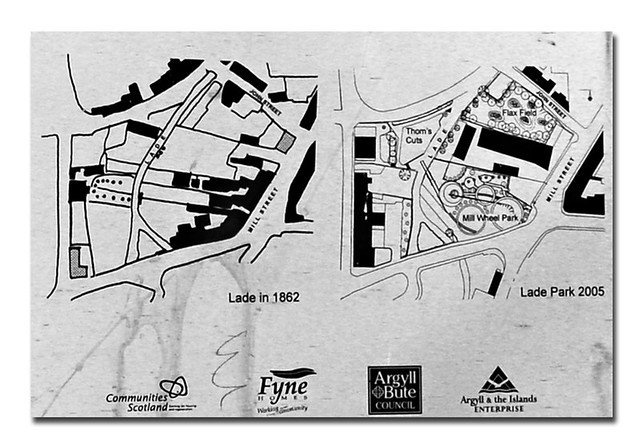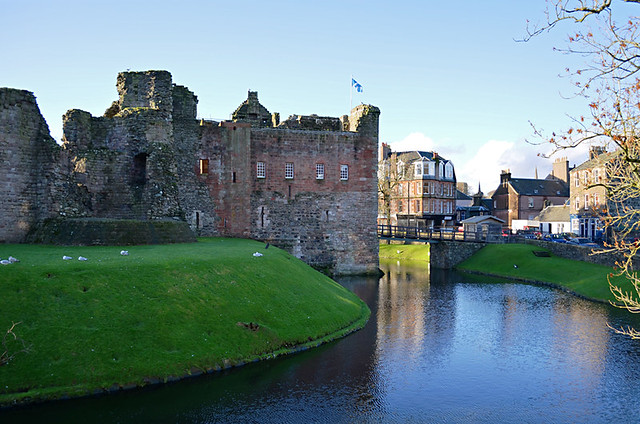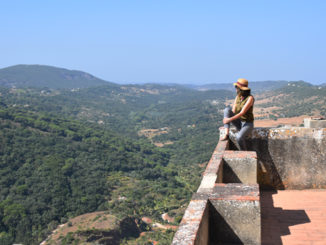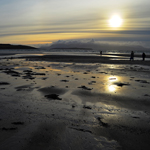When I was growing up the Rothesay Lade scared the hell out of me.
(Lade is the Scottish name given to a watercourse, especially one that carries water to a mill)
To look at it you might wonder why a narrow channel of murky water running from Loch Fad through the town to the sea could be menacing. It is so narrow you could leap across it in parts… if you dared.
The Lade scared me because I believed people-eating monsters lived in its sludgy depths. It scared me because I was told people were lost never to be seen again after falling prey to the monsters with steely grips who lived in the mud. I believed that tale because I witnessed on more than one occasion dogs jumping in, expecting a splash-about, to find themselves imprisoned in quicksand-esque sludge and being dragged down to who knows where. I believed it because of the panic on the faces of their owners as they tried to rescue their whining mutts without being trapped themselves. It wasn’t deep, but only a fool would try to walk across it. Only water voles and herons seemed brave enough to wade through those chocolate waters.
One time it was whispered in the playground that the mother of someone at school had thrown herself in the Lade; a hellish way to go. I think she was rescued, but I’m not sure.
Anyway, the Lade scared me.
But I didn’t really know that much about it until a recent visit. Rothesay on the Island of Bute, thirty five minutes by ferry from the west coast of Scotland, was simply the place I grew up. Why would I be interested in it when everywhere that wasn’t Bute was more exotic?
What jewels I ignored.
The Lade was once a stream known as the ‘water of Rothesay’. It’s thought to have been the source of the water that surrounds Rothesay Castle. In the 16th century it helped power corn mills before cotton mills replaced them from the 17th to the 19th century. By that time there were five mills in Rothesay and the streets around the area were populated by mill workers.
A tragedy in the mid 1880s with a surprising twist might explain why the Lade always seemed a dangerous and malignant presence.
Why You Should Drink Alcohol
Incredibly for an island with lochs aplenty, there was no piped water in Rothesay in the 1850s; people drew their water from wells. In summer these wells could dry up so some people took their water from the Lade. It’s not clear water now and it wasn’t then.
An outbreak of cholera in the town in the 1850s had a devastating effect. It ripped through Bishop Street killing many residents. However, it was selective in who it chose as victims.
Everyone in Bishop street who died from the outbreak was a tee-totaller, they didn’t let alcohol pass their lips. Where every single tee-totaller in the street died, all those who ‘diluted’ their water with a wee dram of whisky survived. The wee dram saved them. Uisge beatha – the water of life.
I’d never heard that story before, it made me realise two things. The first is that the island I grew up on is full of tales and treasures which I failed to appreciate until now.
The second is that I won’t be giving up alcohol any time soon.
Some of the information above comes from Lade Park; a monument created by students from the art department of Rothesay Academy. How come we never did anything interesting like that when I went there?
Jack is co-owner, writer and photographer for BuzzTrips and the Real Tenerife series of travel websites as well as a contributor to lots of other places. Follow Jack on Google+







Be the first to comment